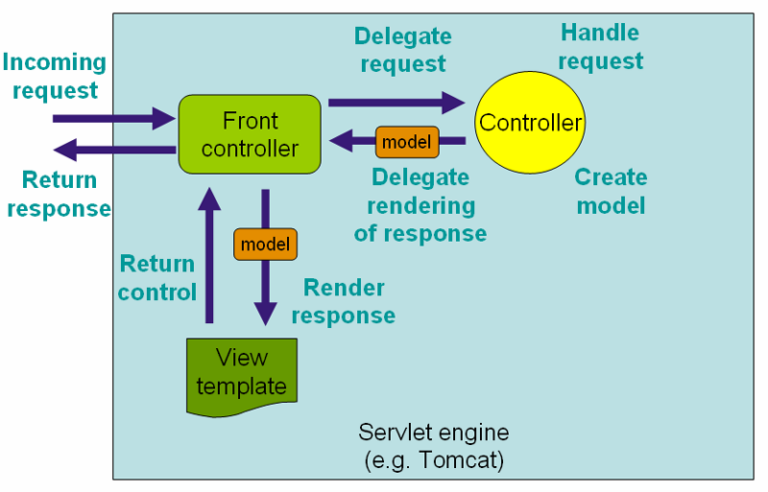Spring Bean Autowiring with @Autowired Annotation
Introduction:
Spring Framework‘s Autowiring feature allows automatic injection of beans into your application. The @Autowired annotation is one of the ways to achieve this. It can be used to inject beans in various ways such as constructor, setter methods, properties, and more. The @Autowired annotation also has several parameters that you can use to fine-tune its behavior.
1. Constructor Autowiring:
In constructor autowiring, Spring Framework injects the dependencies through a constructor. This is particularly useful when you have immutable objects or when you want to ensure that all dependencies are satisfied before the object is created.
import org.springframework.beans.factory.annotation.Autowired;
public class MyApp {
private MyBean myBean;
@Autowired
public MyApp(MyBean myBean) {
this.myBean = myBean;
}
public void run() {
myBean.printMessage();
}
}2. Setter Autowiring:
In setter autowiring, Spring Framework injects the dependencies through setter methods. This is useful when you want to inject dependencies into an already created object.
import org.springframework.beans.factory.annotation.Autowired;
public class MyApp {
private MyBean myBean;
@Autowired(required = true)
public void setMyBean(MyBean myBean) {
this.myBean = myBean;
}
public void run() {
myBean.printMessage();
}
}In the above code, the required parameter is set to true, which means that Spring will throw a BeanCreationException if it can’t find a bean of type MyBean.
3. Property Autowiring:
In property autowiring, Spring Framework injects the dependencies directly into the fields. This is the most straightforward way of autowiring, but it’s not recommended for production code as it makes testing more difficult and can lead to null pointer exceptions if not handled properly.
import org.springframework.beans.factory.annotation.Autowired;
public class MyApp {
@Autowired(required = false)
private MyBean myBean;
public void run() {
if (myBean != null) {
myBean.printMessage();
}
}
}In the above code, the required parameter is set to false, which means that Spring won’t throw an exception if it can’t find a bean of type MyBean.
4. Autowiring with Qualifier:
If you have multiple beans of the same type and you want to wire a specific one, you can use the @Qualifier annotation along with @Autowired. The @Qualifier annotation allows you to specify which bean to autowire by name.
import org.springframework.beans.factory.annotation.Autowired;
import org.springframework.beans.factory.annotation.Qualifier;
public class MyApp {
@Autowired
@Qualifier("myBean")
private MyBean myBean;
public void run() {
myBean.printMessage();
}
}In the above code, Spring will inject the bean with the id “myBean” into MyApp.
5. Autowiring with @Resource:
The @Resource annotation is another way to autowire beans in Spring. It can be used as a field or setter injection. The main difference between @Autowired and @Resource is that @Resource matches by name by default, while @Autowired matches by type. However, you can change this behavior by setting the name attribute in the @Autowired annotation.
import javax.annotation.Resource;
public class MyApp {
@Resource(name = "myBean")
private MyBean myBean;
public void run() {
myBean.printMessage();
}
}In the above code, Spring will inject the bean with the name “myBean” into MyApp.
6. Autowiring with @Inject:
The @Inject annotation is a part of the Java Contexts and Dependency Injection (JSR-330) specification and can be used as an alternative to @Autowired. It works in the same way as @Autowired, but it’s not specific to Spring.
import javax.inject.Inject;
public class MyApp {
@Inject
private MyBean myBean;
public void run() {
myBean.printMessage();
}
}7. Autowiring with @Primary:
If you have multiple beans of the same type and you want to wire one of them without using @Qualifier, you can use the @Primary annotation. The @Primary annotation indicates that a bean should be given preference when multiple beans could match a single autowired property or parameter.
@Component
@Primary
public class MyBean implements MyInterface {
// ...
}
public class MyApp {
@Autowired
private MyInterface myInterface;
public void run() {
myInterface.printMessage();
}
}In the above code, Spring will inject the bean with the @Primary annotation into MyApp.
Remember to enable component scanning in your Spring configuration file:
<context:component-scan base-package="com.example" />This tells Spring to look for beans in the com.example package and its subpackages.
Conclusion:
By mastering the @Autowired annotation and understanding the intricacies of Spring bean autowiring, developers can enhance the maintainability and flexibility of their Spring applications. This tutorial provides comprehensive guidance and detailed code examples to empower developers to leverage autowiring effectively, resulting in cleaner, more modular code and improved application architecture.
Share this invaluable resource with your fellow developers to help them succeed too.
Let’s level up our Spring skills together! follow elgarnaoui.com on social media.
#Spring #Programming #DeveloperCommunity





